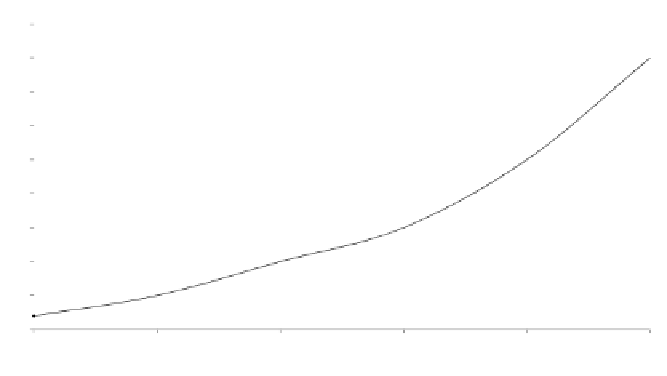Environmental Engineering Reference
In-Depth Information
Source:
ICAO (2000)
Figure 2.1
World annual air passenger traffic growth and forecast
are not unreasonable. Figure 2.1 shows that the number of passengers has doubled
every 12-15 year period since the 1970s. There are a number of interrelated reasons
for growth. Increased airframe and engine technology has improved efficiency in
terms of the capability and economic performance of air transport with respect to
speed, range and fuel economies. This has consequently led to the reduction in the
unit cost per available seat kilometre flown, excluding the cost to the environment.
The expansion of the global economy, rising levels of gross domestic product
(GDP), package holidays, the falling price of air transport to the consumer, relative
increase in wealth of the population and the new globalized structure of industry are
further factors that have driven growth and are likely to continue to drive it in the
future (Doganis, 1998; Airbus, 2000; Boeing, 2001a).
The proportion of passengers flying for leisure purposes varies by route. Gener-
ally speaking, in Europe 50 per cent of passengers are flying on leisure and 50 per
cent on business; for Europe-North Atlantic routes it is estimated that 80 per cent
fly on leisure and only 20 per cent on business. The geographical distribution of air
transport activity reflects global economic wealth: North America and Europe account
for around 70 per cent of world passengers; Asia currently accounts for 21 per cent
and is likely to exhibit the strongest growth; Africa, Latin America, the Middle East
and the Caribbean account for 9 per cent (ICAO, 2000). The pressure for expansion
of infrastructure to accommodate growth is universal, and begs the question of how
much more the industry can realistically continue to grow. The potential for growth
in terms of passenger trips is massive given that only around 1 per cent of the world's
population has ever flown.
Airport congestion
Forecasts typically and unrealistically assume an unconstrained availability of infrastruc-
ture to accommodate growth. Despite the scale of current and future development













































































